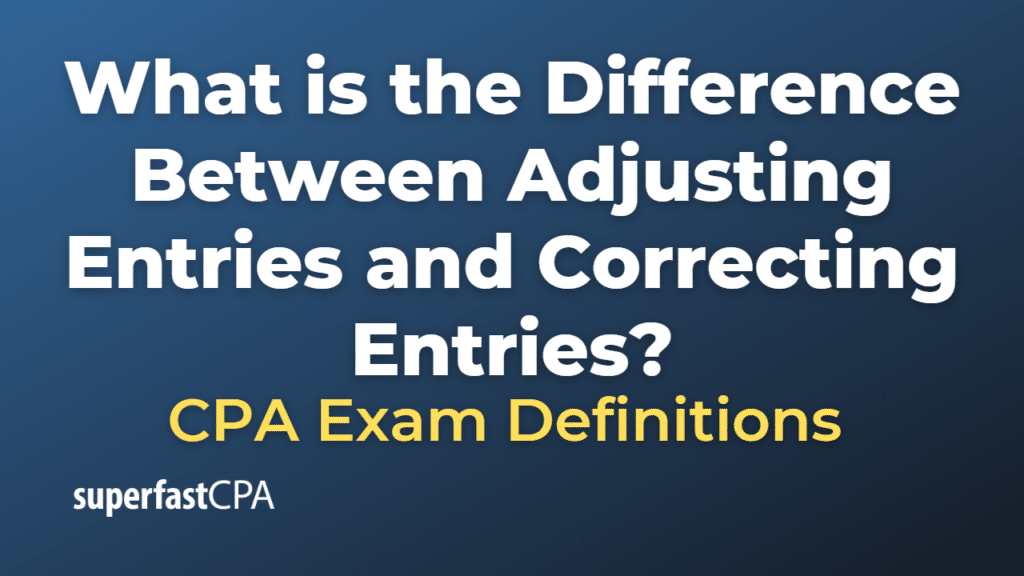Difference Between Adjusting Entries and Correcting Entries
Adjusting entries and correcting entries are two types of journal entries in accounting, each with a different purpose.
Adjusting Entries:
Adjusting entries are made at the end of an accounting period to align the revenues and expenses to the “right” period, in accordance with the accrual principle of accounting. The goal is to ensure that financial statements reflect the revenues that have been earned and the expenses that were incurred during the accounting period.
There are typically four types of adjusting entries:
- Accrued Revenues: Revenues that have been earned, but no cash was received, and the revenue was not previously recorded.
- Accrued Expenses: Expenses that have been incurred, but no cash was paid, and the expense was not previously recorded.
- Deferred (or Unearned) Revenues: Cash was received, and a liability was recorded, but the revenue was not earned until this period.
- Prepaid (or Deferred) Expenses: Cash was paid and an asset was recorded, but the expense was not incurred until this period.
Correcting Entries:
Correcting entries, on the other hand, are made whenever an error is found in the financial statements. These can be simple clerical errors, like entering a wrong amount or duplicating entries, or more complex errors like recording transactions in the wrong account.
Correcting entries ensure that the financial statements are accurate and in compliance with accounting principles. The nature of the correcting entry will depend on the specific error that was made.
For example, if a company mistakenly recorded a $500 payment for office supplies as a debit to the Equipment account (instead of the Supplies account), a correcting entry would be needed to rectify this. The correcting entry would be a $500 credit to the Equipment account and a $500 debit to the Supplies account.
In summary, adjusting entries are part of the normal accounting process, made at the end of each accounting period, to ensure that revenues and expenses are recorded in the period in which they are earned or incurred. Correcting entries are made as needed, whenever errors are found in the financial statements.
Example of the Difference Between Adjusting Entries and Correcting Entries
Adjusting Entry Example:
Let’s consider a software company, Software Inc., that sells software subscriptions. Customers pay upfront for an annual subscription, and this cash received is initially recorded as unearned revenue (a liability account), because Software Inc. has an obligation to provide the service in the future.
Now, assume that a customer pays $1,200 on January 1st for a one-year software subscription. At the end of January, Software Inc. has fulfilled one month of the service, so $100 of the unearned revenue ($1,200 / 12 months) is now considered earned.
The adjusting entry at the end of January would be:
- Debit Unearned Revenue $100
- Credit Revenue $100
This entry decreases the Unearned Revenue account and increases the Revenue account, reflecting the revenue that has been earned during January.
Correcting Entry Example:
Now, let’s assume that Software Inc. purchased $500 of office supplies in cash, but the transaction was incorrectly recorded as a debit to the Equipment account.
The correcting entry to fix this error would be:
- Debit Office Supplies $500
- Credit Equipment $500
This entry removes the incorrect amount from the Equipment account and correctly increases the Office Supplies account.
In summary, adjusting entries are made at the end of an accounting period to align revenues and expenses with the period in which they are actually earned or incurred. In contrast, correcting entries are made as needed to correct errors in the financial statements.













